A Queen Anne Masterpiece in Canby
John Grant Lund was a feisty showman and self-made millionaire known locally as the real estate king of Canby. As one of southwestern Minnesota’s first land speculators, he was known to meet incoming trains filled with prospective settlers at the depot. Accompanied by a full band, Lund would take center stage in a vest decorated with brass buttons, a bandmaster’s cap, and a cornet that he would blow to call attention to his sales pitch. The colorful show worked. In 1889 alone, Lund sold more than 60,000 acres of land in Yellow Medicine County and had another 100,000 acres of wild and improved land for sale through the Lund Land Agency.
Born in 1868 to Norwegian immigrants, John Lund moved to Canby with his family in 1876. His father ran the hardware store in town, where John’s brothers often helped out. John, however, began working as a cashier at the bank in town at age 15. He married Flora Miller in 1888 and started his real estate business the same year.
In August of 1890, Lund swept into the offices of the Canby News to announce that he was planning to build a “palatial residence” to the north of the park square. He requested that his announcement was printed in the newspaper the next day. So, it wasn’t a surprise to the folks in Canby when several loads of lumber arrived in town and were stacked on a sprawling corner lot in April 1891. The Canby News reported that Lund planned to “put up a very fine residence from modern plans.” Lund hired as many carpenters as he could find to build his house in the shortest amount of time possible. In fact, John and Flora moved into their new home just 49 days after construction began.

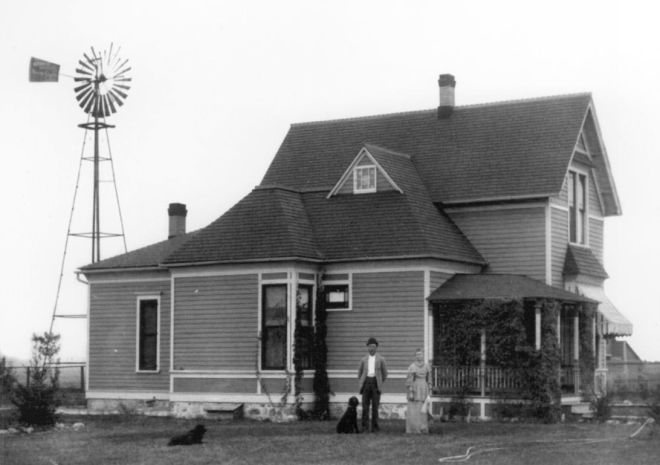
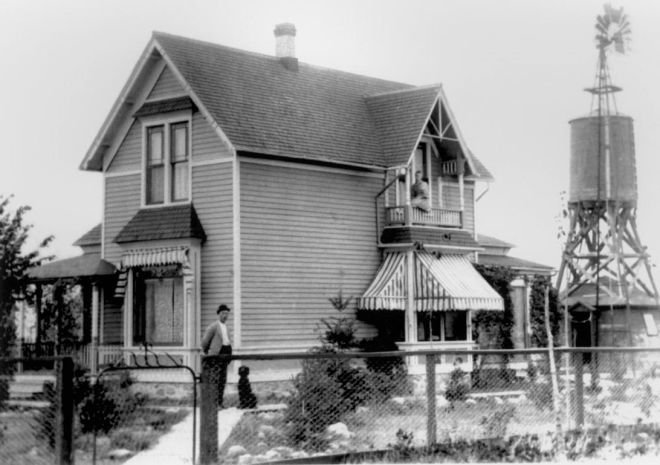
Their new residence was a simple, two-story, vernacular-style home of about 1,200 square feet. The most modern feature was added in 1895–a gas plant in the basement that allowed gas to be pumped throughout the house to the light fixtures. This meant that the home could be lit by gas rather than kerosene.
From this modest house, Lund founded and became President of the First National Bank of Canby and was persuaded to dip his toes into local politics. His energetic personality made him a natural candidate for mayor in 1898. He won by a landslide.
The beginning of a new decade inspired the Lunds to construct an extensive addition and significant update to their home. Lund had become a bonafide millionaire due to extensive real estate sales by the Lund Land Agency, which established several new branches in North Dakota, South Dakota, and Iowa. He also organized and chartered several banks in southern Minnesota and eastern South Dakota.
The simple home was transformed into a Queen Anne-style masterpiece around the turn of the century. The original structure became a small portion of the southwestern corner of the new home that enveloped it. The new part of the house featured a two-story tower with a recessed porch, sweeping porches on the first level, several balconies, and stained glass windows. Inside, the first floor consisted of a grand entryway, two parlors, a library, dining room, kitchen with large pantry, and a bathroom. The second floor had five bedrooms, a billiard room, and plenty of storage space. Outside, a fieldstone fence was added. The Canby News noted: “This stone is odd, yet there is a charm about it which tends to make its surroundings home-like and unique.”
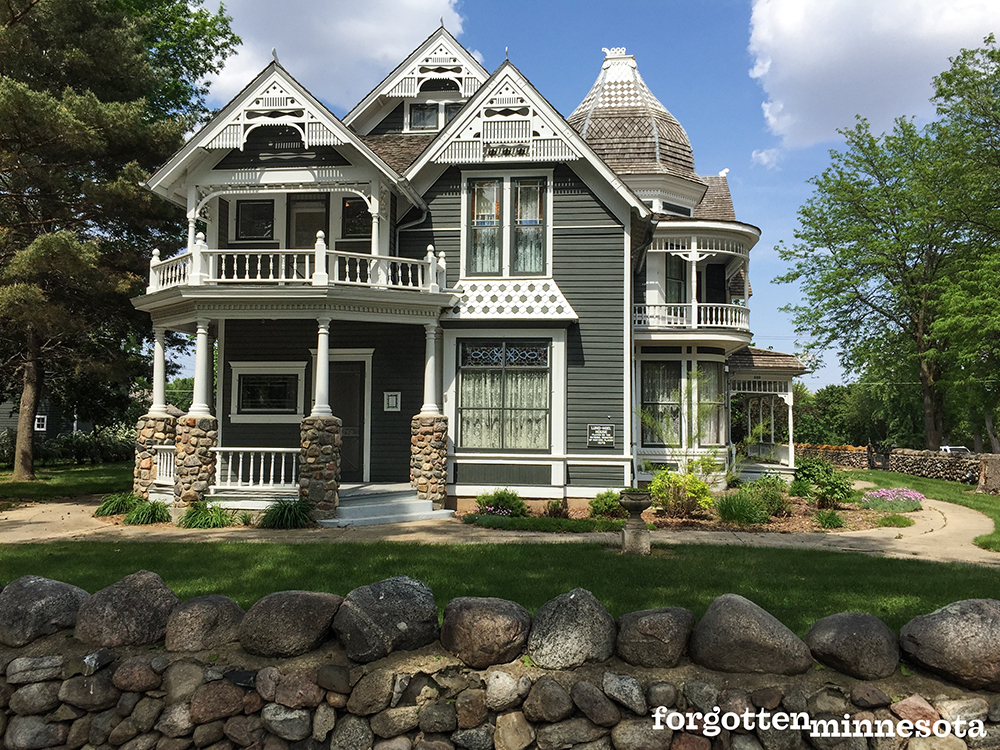

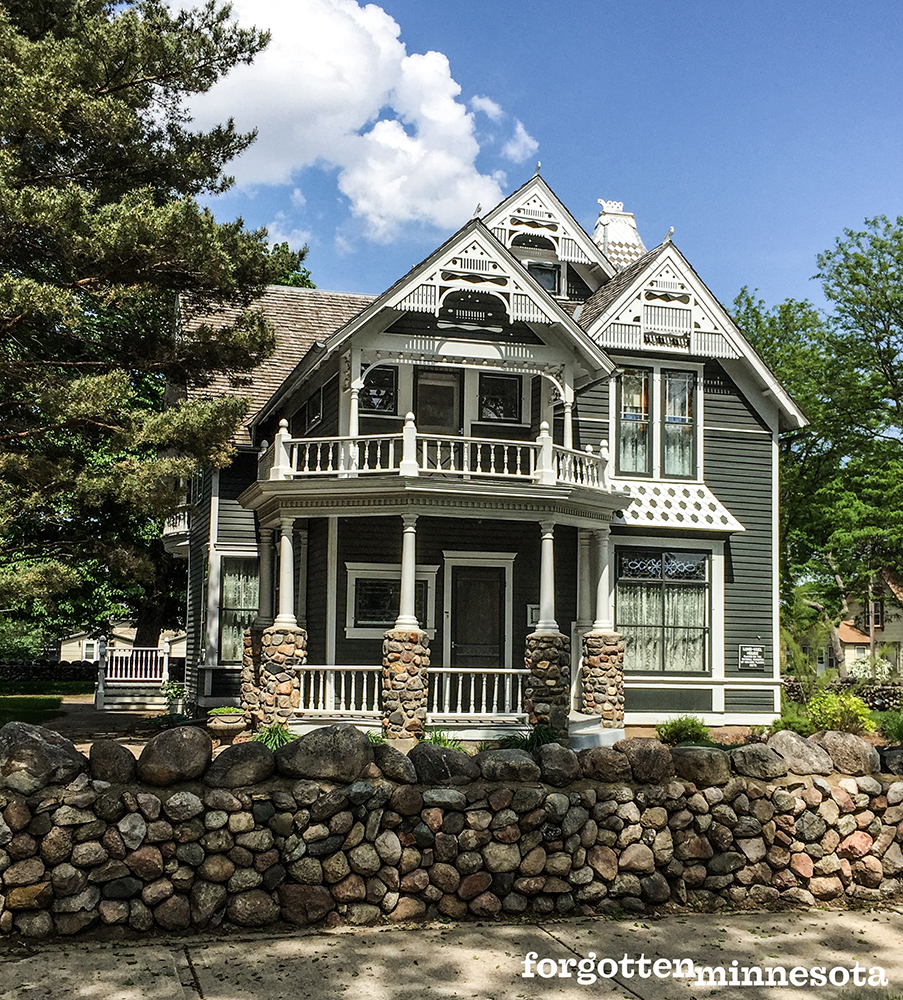
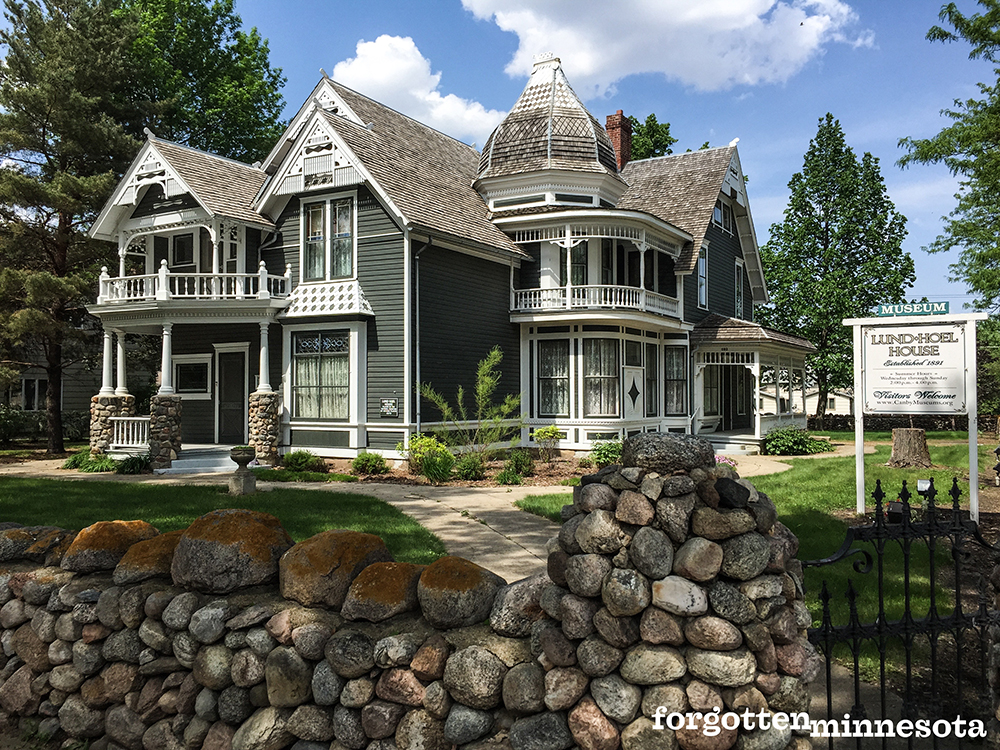
The next summer, Lund laid cement walkways near the road and throughout a portion of a garden planted to the west of the house known as Lund Park.
In 1903, John and Flora sold their much-admired home to John’s sister, Mary, and her husband Reverend Olaf Hoel for $10,000. John and Flora moved to Minneapolis and John was soon elected to the Minnesota House of Representatives where he served the 1905-1906 term. They would never again see their beloved home. In 1907, while living in Minneapolis, Flora died. John died the following year.
The Lund’s former home stayed in the family until 1958, although no family members lived in the house after 1932. When John’s niece, Nella, moved to Minneapolis, she took many of the original pieces of furniture and family mementos from the home with her. She leased the house to at least two separate families before eventually splitting the house into several apartments. In the 1950s, Nella and her husband decided to sell the house to a couple who wanted to turn it into an elder care facility. The sale closed on April 1, 1958.
Shortly after Nella’s death in 1978, the home was listed on the National Register of Historic Places. Today, the Lund house is operated as a historic house museum. Tours of John and Flora’s home are offered throughout the summer. The building that housed the Lund Land Agency is still located at 123 St Olaf Ave N.
